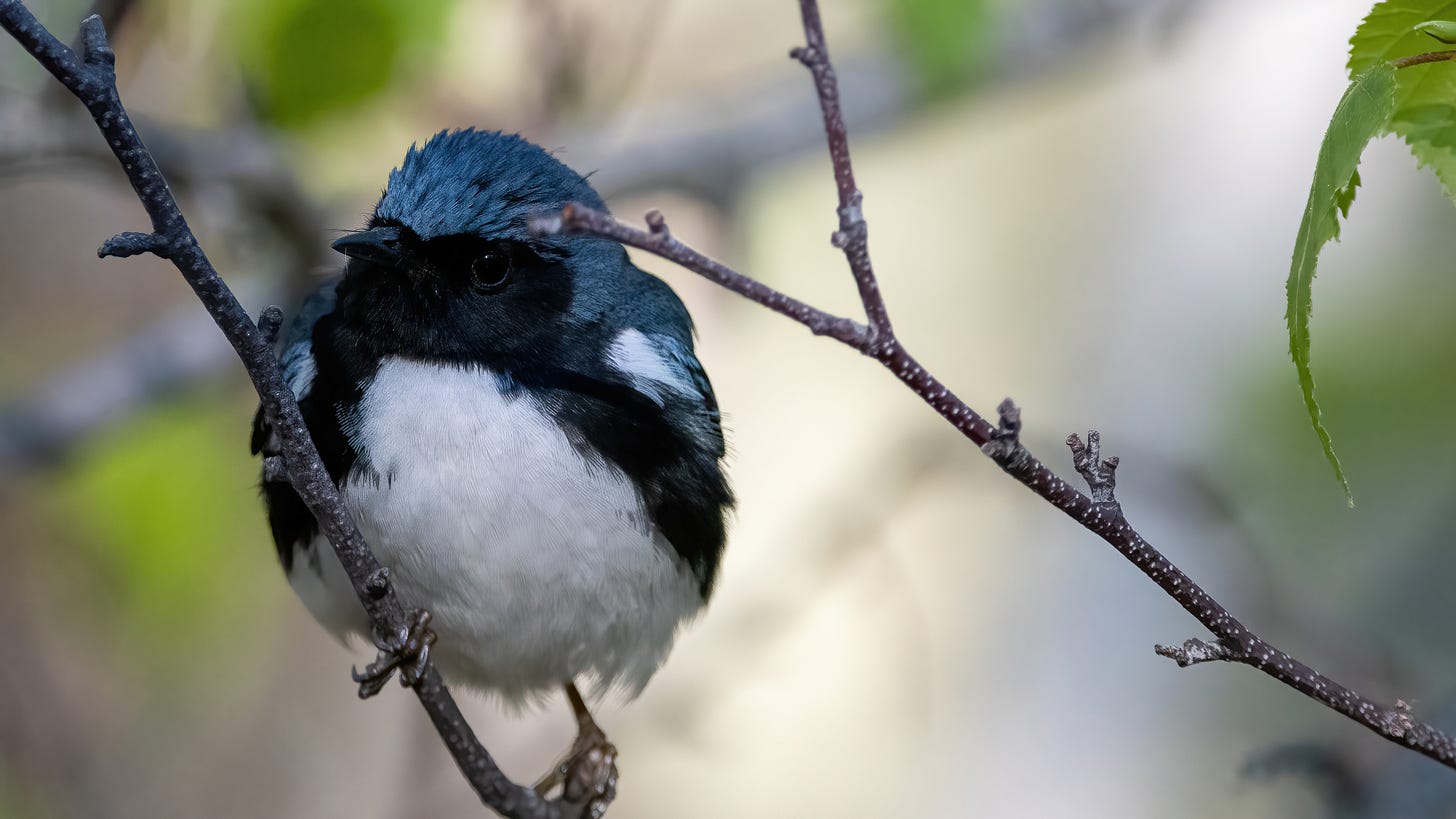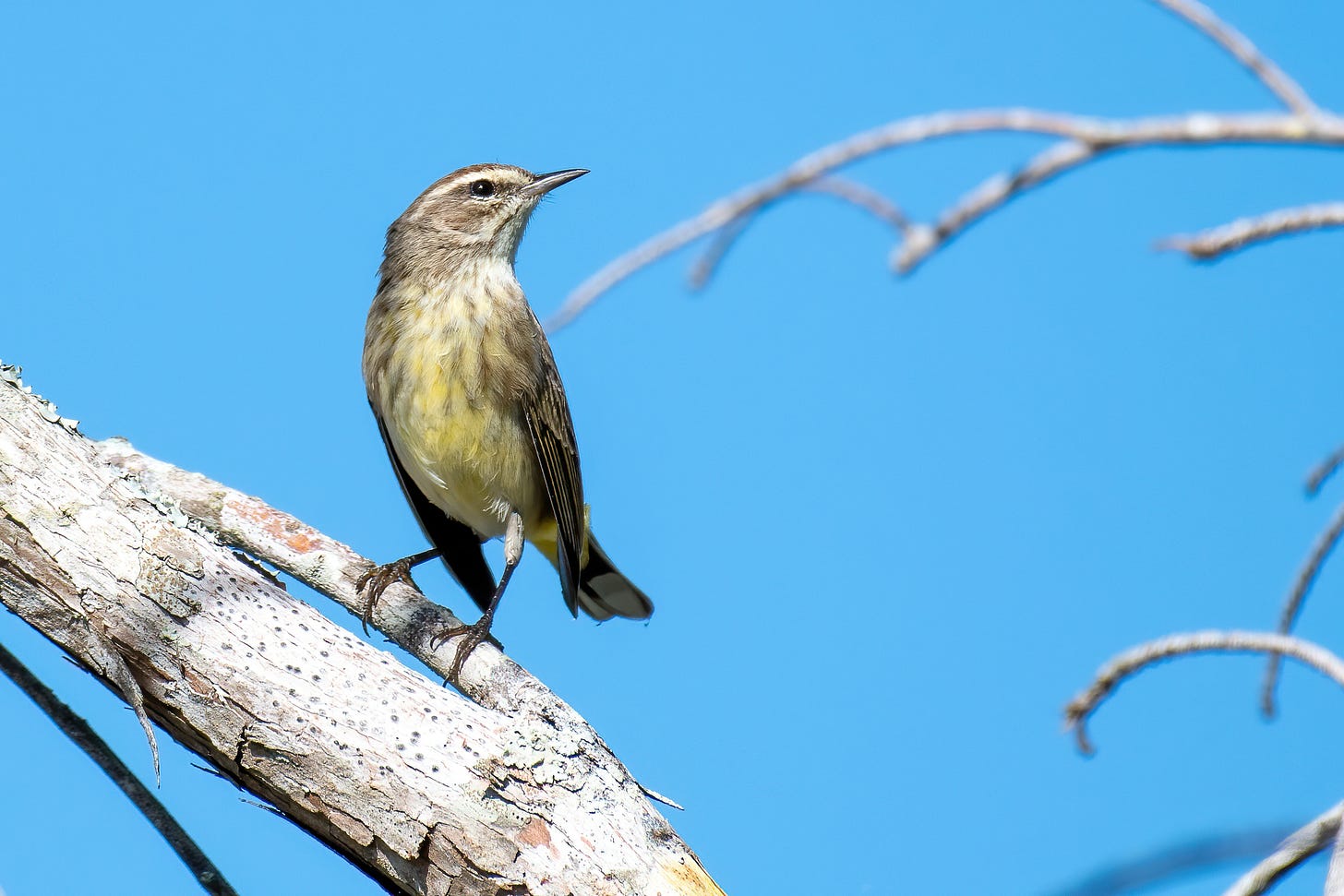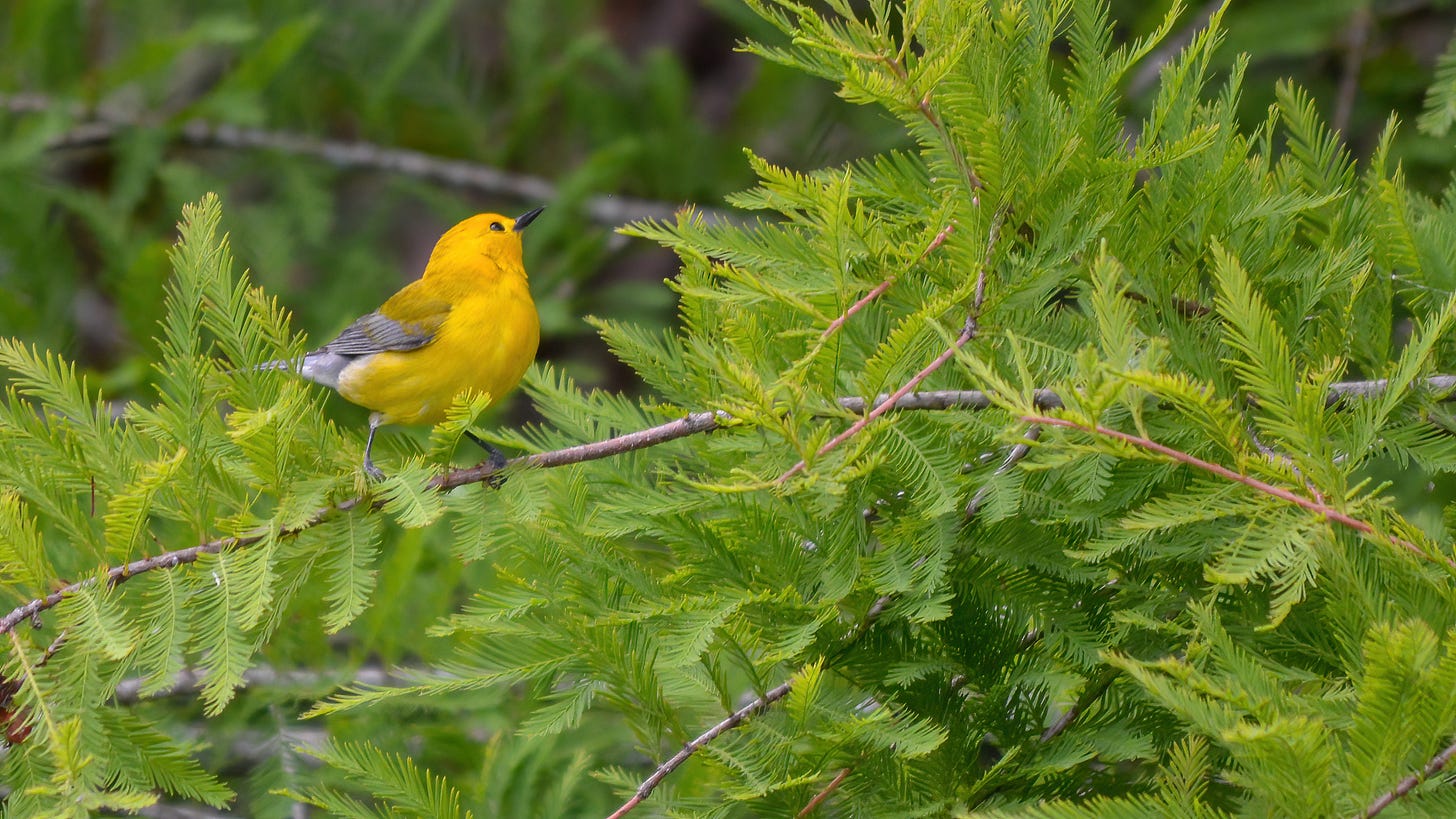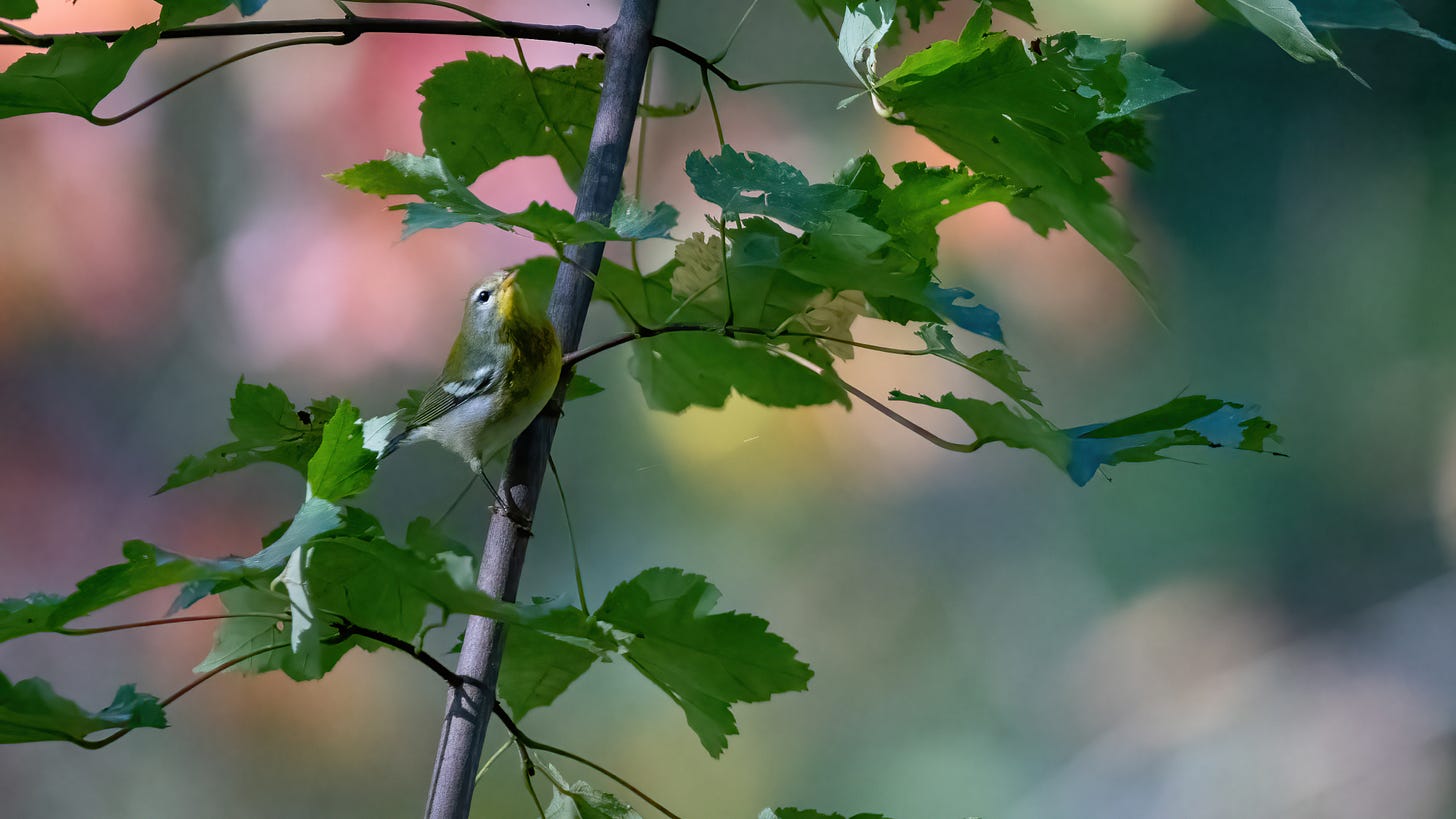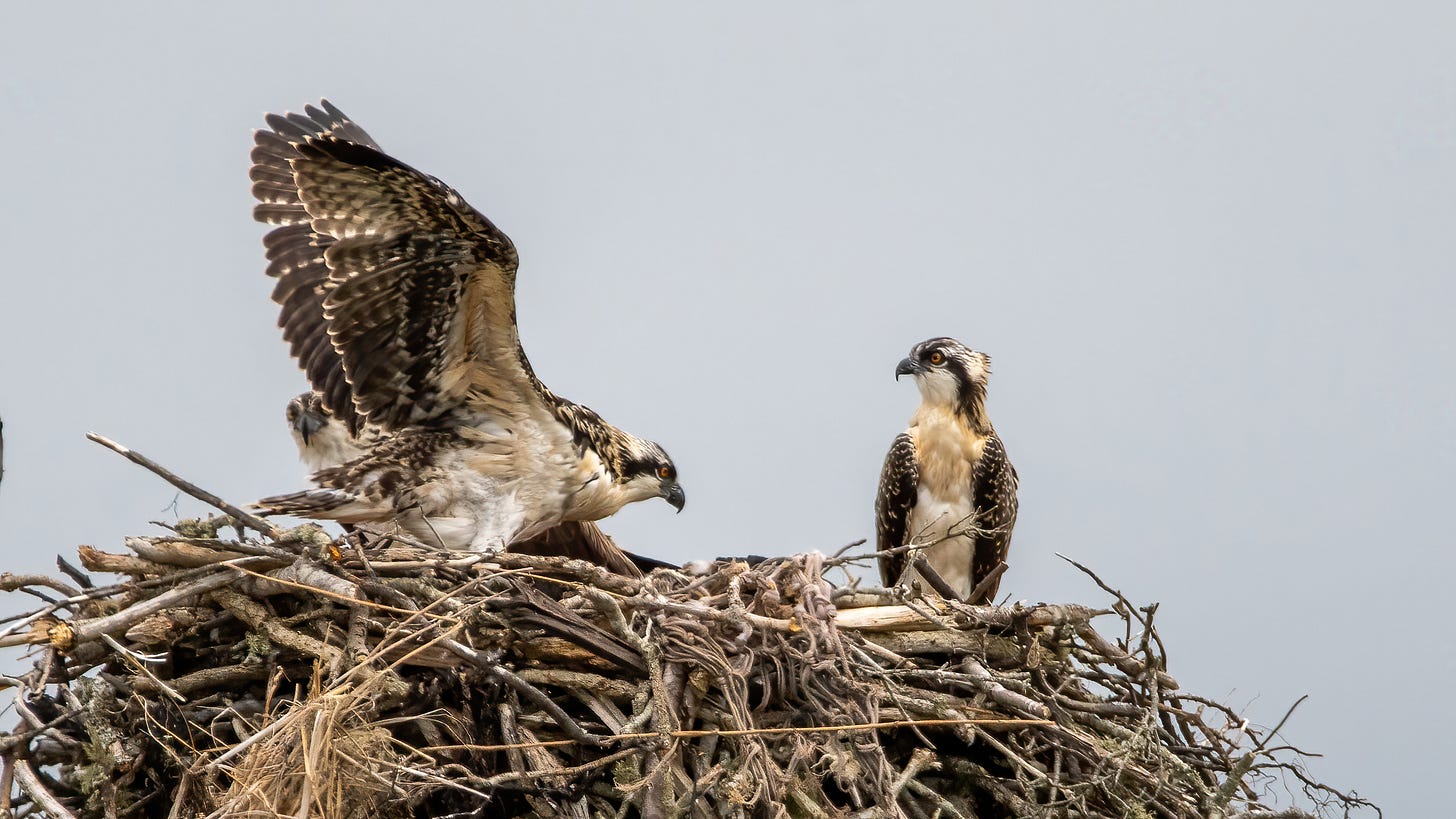Douglas Brinkley’s The Wilderness Warrior: Theodore Roosevelt and the Crusade for America opens with an illustrative anecdote.
On a wintry morning in 1903 President Theodore Roosevelt arrived at a White House cabinet meeting unexpectedly and with great exuberance. Something of genuine importance had obviously just happened. All eyes were fixated on Roosevelt, who was shaking like a dervish with either excitement or agitation—it was unclear which.
Brinkley concludes the story:
“Gentlemen, do you know what just happened this morning?” Roosevelt breathlessly asked, as everybody leaned forward with bated breath for the bad news. “Just now I saw a chestnut-sided warbler—and this is only February!”
It would be greatly favorable to have a president so enthused by seeing a warbler. To get my vote, a candidate should just start waxing poetic on the debate stage about Blue-winged Warblers or Least Terns, or obviously Osprey—or about the importance of prioritizing migratory birds in legislation.
Perhaps this just reflects my bias, but a person who takes the time to study warblers tends to take that same devotion to other aspects of life—maybe some which would make a good president.
Despite my efforts, I too fall short of Roosevelt’s bar. Maybe the key difference is I’ve never shot a warbler to more closely look at it. That was in jest. Different times. Still, to quote David Gessner in Soaring with Fidel, “when it came to killing animals, for instance, [Roosevelt] made Audubon look like a slacker.” Even merely on Audubon’s Wikipedia page, it is explained that, to draw birds, he first “killed them using fine shot.” So, two people the bird world owes a lot to partook in the killing of birds.
I’ve never shot a warbler, never will, wouldn’t dream of it—but understand why Roosevelt and Audubon did. Roosevelt, in my book, is held in high regard.
Gessner writes, too, in Soaring with Fidel: Roosevelt’s “life told a story whose moral was that it was okay to brag and even smash and crash sometimes, and occasionally to speak in sentences that ended in exclamation points.”
Teddy Roosevelt left some great lessons on how to be, but also, to circle back to Brinkley, “helped set aside for posterity (or for “the people unborn” as he put it) a legacy of over 234 million acres, almost the size of the Atlantic coast states from Maine to Florida (or equal to one out of every ten acres in the United States, including Alaska). All told, Roosevelt’s legacy was almost half the landmass Thomas Jefferson had acquired from France in the Louisiana Purchase of 1803.”
That captures a large part of Roosevelt’s appeal. Though I don’t have qualms with him, I understand there are reasons why people do.
I feel best about identifying a warbler when it’s an adult male. Knowing birdsong helps. Song has helped my confidence in saying what kind of warbler a bird is. Brad, Jack Black’s character in The Big Year, incredibly fluent with bird sounds, was onto something. Inspired by this fictional character, it’s not unheard of for me to play bird calls and song through my headphones as I make breakfast, or through speakers as I shower.
Tom Stephenson and Scott Whittle’s The Warbler Guide is a hefty tome, but invaluable. Despite how much time I’ve spent poring over its pages, I still usually come away either feeling just as unconfident as when I started—it makes clear I didn’t even realize how much I didn’t know—or telling myself: Good luck employing whatever knowledge you just fleetingly obtained when you’re out trying to identify warblers in the field, on a boardwalk by an estuary, or by a body of water, or in that spot where you saw a Blackburnian three years ago.
A Chestnut-sided Warbler is exciting because it is not as common as a Yellow Warbler can be, but not so rare as, say, a Prothonotary Warbler in Massachusetts. It’s something that’s not unheard of to see, but simultaneously not that common—as a Yellow-rumped Warbler, or, at times, a Palm Warbler.
Chestnut-sided Warblers don’t usually spend too much time in large trees, have a preference for nesting in “young deciduous regrowth and other thickets, where small trees and shrubs have been regenerating for a few years after a disturbance such as logging or wind storm.”
These birds prefer younger trees and shrubs, though they’re a bit less choosy in wintertime or during migration. Audubon’s website describes Chestnut-sided Warblers as “far more common today than in early 19th century, with much greater area of second growth brush in East.” Still worth getting excited about—worth having your own Roosevelt moment after seeing one. In a way, they capitalize on humanity’s reckless desire for development—which often is the bane of forests. They’re “one of the few warblers benefiting from forest clearing, since [this bird] uses shrub and secondary growth,” as explained in The Warbler Guide.
Another exciting aspect is that these birds look relatively distinct. As described—again in the immensely informative and useful The Warbler Guide—this bird has a “bright yellow-green cap and chestnut stripes [which] are visible even from the front.” The length of those stripes varies by bird.
Warblers have a difficult penchant for looking quite similar. Yellow Warblers and Wilson’s, Palms, Pines, Yellowthroats. Female and immature birds present a larger challenge. Not impossible to tell apart in photos, which don’t move, which you can really slow down and look at, but much harder in the field, when they’re flitting about. When the thinness of a wingbar, the stoutness of a bill, or some subtle streaking isn’t so apparent. The plumage and field markings of mature males are more distinct.
Warblers embody one of the elements of birding I find so worthwhile. It’s not easy to know one from the other; it requires that you take it upon yourself to learn, to study field guides, to know the factual details of how a bird spends its days.
Getting better at birding isn’t a mandatory use of your time. You have to want to do it. The drive has to come from within—it’s a challenging task that you and you alone can make yourself better at. I’m sure a lot of it seems pointless to somebody with no interest in birds. Who cares what kind of warbler is in that shrub? Who cares what’s rare and what isn’t?
You have to care. The only person who benefits from increasing your knowledge of warblers is you, yourself. You have to want to do that work to get the result that you want.
It’s about you and the birds. That is it. It’s a pure form of self-betterment that I’m sure some people don’t see as self-betterment at all, rather as a waste of your mental faculties.
If I had to sum all of this up for those who didn’t feel like reading, people who saw this and thought “TLDR” but still want to know what I talked about, I’d say:
I like warblers; I like Theodore Roosevelt. Warblers can be tough to tell apart. Despite those difficulties, I have a special place in my heart for warblers that aren’t that common but also not that rare.






